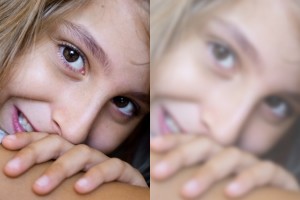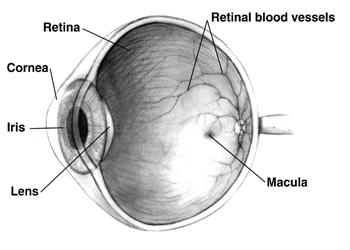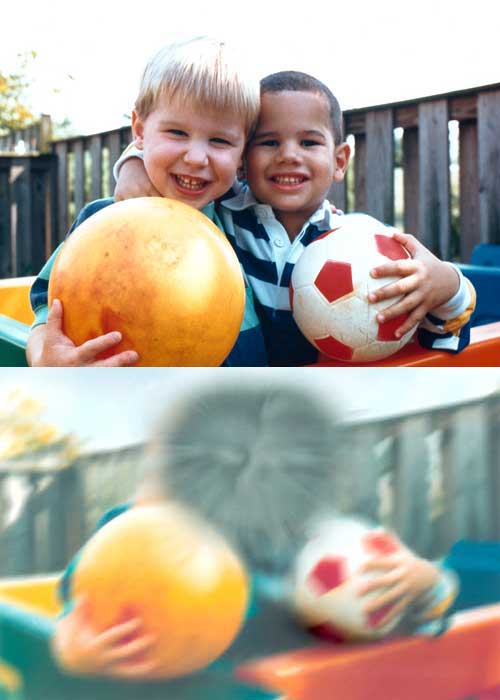 |
INFORMATION |
 |
INFORMATION |
This section is being developed and will eventually link to all kinds of information, from free bus travel to dealing with sight loss. If you’re unable to find the information you need, please contact us.
 Dealing with Sight Loss
Dealing with Sight Loss
 Whether it’s a person, pet or your sight, everybody has their own way of dealing with a loss. It’s important to remember that life doesn’t end after the diagnosis of an eye condition. In some cases people use it as a challenge and become empowered by the sudden change of life, although in most cases people can feel shock, anger, fear, sadness, loss or a combination of these. However, at first it’s very difficult for everybody to adjust.
Whether it’s a person, pet or your sight, everybody has their own way of dealing with a loss. It’s important to remember that life doesn’t end after the diagnosis of an eye condition. In some cases people use it as a challenge and become empowered by the sudden change of life, although in most cases people can feel shock, anger, fear, sadness, loss or a combination of these. However, at first it’s very difficult for everybody to adjust.
It’s always easier to deal with a sudden change of life when a family member or friend is there to help. But if you don’t know anybody who can help, don’t panic. You’re not alone, and there are people who can help. Contact ESAB for information, help and support.
After diagnosis your GP should explain your eye condition and its possible affects, as well as signposting you to useful sources of information and organisations that can help. For more information about your eye condition please see Eye Conditions. It’s important that you understand your eye condition, how it will affect you and others around you and make any changes that will help you regain your confidence, independence and wellbeing.
One of the best methods of coming to terms with your sight loss is to meet with somebody, or a group of people who have the same or similar eye condition, allowing you to share experiences, tips and advice. ESAB supports 14 social groups across East Sussex, where you could meet with other people with sight loss. Please call us on 01323 832 252 to join your local group.
Life will become more of a challenge, and it’s important – for your own safety – to accept that there may be certain things you’re no longer able to do. At first you may find it difficult to follow your favourite TV programmes, recognise people or cook, but with the right help and support you don’t have to sacrifice your independence. See Tips and Tricks for simple ways to help you around the home or when out and about.
Your sudden change of life can also be very frustrating for people around you. It’s important that they also understand the eye condition and are willing to help and support you. For more information please read Helping Others with Sight Loss. ESAB run a Vision Awareness Course that aims to give participants the practical skills, knowledge and understanding required to help somebody with sight loss.”
 Eye Conditions
Eye Conditions
If you have a form of sight loss it’s important that you understand it. Its effects will determine the decisions you and others around you make. Even the more treatable eye conditions can change how you behave and think. Below you can find information about the most common eye conditions. If you’re unable to find the information you need please contact us.
Age related Macular Degeneration (AMD)
Age-related macular degeneration (AMD) usually affects older adults and results in a loss of central vision because of damage to the retina. People aged over 50 are more likely to develop this eye condition.
Age related Macular Degeneration occurs in dry and wet forms and can make it difficult or impossible to read or recognise faces. However, in most cases enough peripheral vision remains to allow other activities of daily life.
The macula is the central area of the retina, which provides the most detailed central vision.
In the dry form, cellular debris builds up between the retina and the choroid, and the retina can become detached. In the wet form, blood vessels grow up from the choroid behind the retina, and the retina can also become detached. The wet form of AMD is considered to be more severe, but can be treated with laser coagulation and medication that prevents and in some cases reverses the growth of blood vessels.
Symptoms vary, most commonly the first noticeable problems are with the ability to see detail, reading small print, (even if you wear your usual reading glasses), or you may find that there is a smudge or blur in your central vision.
Straight lines may also look distorted or wavy. You may also find you become sensitive to bright light or that you see shapes and lights that aren’t actually there. Sometimes people may only notice these changes in one eye.
At this point in time the cause of AMD is unknown. However some things are thought to increase your chances of developing AMD.
AGE – AMD develops as people grow older and is most often seen in people over the age of 65, although it can develop in people who are in their forties and fifties
GENDER – more women have AMD than men, probably because women tend to live longer than men.
GENES – some genes have been identified which seem to be linked to the development of AMD in some people.
SMOKING – smoking greatly increases your risk of developing AMD.
SUNLIGHT – some studies suggest that exposure to high levels of sunlight (particularly the UV light contained in sunlight) throughout your life may increase your risk of developing AMD.
DIET – a number of studies have looked at diet as a risk factor for someone developing AMD. At the moment there isn’t agreement on how much of a risk factor diet is. There is some evidence that vitamins A, C and E and zinc may help to slow the progression of AMD in people who already have the condition.
Cataracts
Cataracts are a common eye condition that usually develops as you age. The lens inside your eye gradually changes over time and becomes less transparent. A lens that has turned misty, or cloudy, is said to have a cataract. A cataract can get worse over time as the lens becomes cloudier, making it harder to see.
A cataract can get worse over time as the lens becomes cloudier, making it harder to see.
Fortunately, a simple operation can usually remove the damaged lens. An artificial replacement lens can be inserted, allowing you to regain full use of your vision.
Apart from ageing, the other common causes of cataract include:
- diabetes
- trauma
- medications, such as steroids
- eye surgery for other eye conditions
- other eye conditions
Most cataracts are caused by natural changes in the lens, which happen as you get older. Some children can also develop cataracts, before or just after birth, called congenital cataracts, These are usually dealt with differently to cataracts in adults.
Glaucoma
Glaucoma is the name given to a group of eye conditions which cause optic nerve damage at the point where it leaves your eye.
There are four main types of glaucoma:
- Primary open angle glaucoma (POAG) also known as chronic glaucoma
- Acute angle closure glaucoma
- Secondary glaucoma
- Developmental glaucoma.
High pressure in the eye or a weakness in the optic nerve can cause glaucoma . Most commonly, high pressure and weakness in the optic nerve are both involved to a varying extent. (Eye pressure is not connected to your blood pressure).
Your eye requires a certain level of pressure in order to keep the eye ball correctly in place. However, a rise in pressure can damage the optic nerve. The amount of damage there is depends on how high the pressure is and how long it lasts, and whether there is a poor blood supply or other weakness of the optic nerve.
 High eye pressure can cause damage immediately, where as a lesser increase of pressure can cause damage more slowly, resulting in gradual loss of sight.
High eye pressure can cause damage immediately, where as a lesser increase of pressure can cause damage more slowly, resulting in gradual loss of sight.
Aqueous is a watery fluid produced by a layer of cells behind the iris. Drainage channels in your eye returns the fluid to the blood stream. Normally, the amount of fluid produced is balanced by the fluid draining out, but if it cannot drain properly, or if too much is produced, then your eye pressure will rise.
Your ophthalmologist will want to make sure you are responding to treatment and that your eye pressure is in the right range for you and it is stable. It’s important that you make regular appointments to monitor your condition. You will have the pressure measured in your eye, the visual field tested and the back of your eye examined. Some of the tests can take 10 minutes per eye. If your eye pressure stabilises and you are not having any problems with treatment then you will be able to go for check-ups less often. After this initial stage, you may only be required to see your ophthalmologist every 6 or 12 months.
Diabetes Related Eye Conditions
 Diabetes occurs when your body doesn’t produce enough insulin, or the insulin that is produced is ineffective. Insulin regulates the way your body uses the food you have eaten. Nearly one person in 25 in the UK has diabetes mellitus.
Diabetes occurs when your body doesn’t produce enough insulin, or the insulin that is produced is ineffective. Insulin regulates the way your body uses the food you have eaten. Nearly one person in 25 in the UK has diabetes mellitus.
Diabetes is much more common later in life, although some children can develop it too. The two main types of diabetes mellitus are known as Type 1 and Type 2. Diabetes can affect different parts of your body, including your eyes. In fact there are several ways that diabetes can affect your eyes:
- The most serious eye condition associated with diabetes involves the network of blood vessels supplying the retina. This condition is called diabetic retinopathy.
- The unusual changes in blood sugar levels resulting from diabetes can affect the lens inside the eye, especially when diabetes is uncontrolled. This can result in blurring of vision which comes and goes over the day, depending on your blood sugar levels.
- A longer term effect of diabetes is that the lens can go cloudy and this is called a cataract.
Not everyone who has diabetes develops an eye complication. Of those that do, many people have a very mild form of retinopathy which may never progress to a sight threatening condition.
Diabetic retinopathy is the most serious developments of diabetes that affects the eye. The tiny blood vessels in your eye can become blocked or leak, resulting in a loss of vision and damage to the retina. The extent of this will determines what type of diabetic retinopathy you develop. Forty per cent of people with type 1 diabetes and twenty per cent with type 2 diabetes will develop some sort of diabetic retinopathy.
It is not guaranteed that your sight will be affected. You are also less likely to have problems if your diabetes is well controlled and monitored. However, if there are complications that affect the eyes, this can sometimes result in loss of sight.

